You hear a lot about sustainable winemaking these days. But some bake it into their culture more thoroughly than others. Consider Trefethen Family Vineyards.
Trefethen is a nimble 54-year-old family winery in Napa Valley’s Oak Knoll District, one of the region’s coolest regions (temperature-wise) thanks to its natural air-conditioning of cool Pacific Ocean breezes, morning fog and topographical nuances that combine to keep its vineyards as much as 10°F cooler than up-valley locations.
It helps the winery produce cool-climate wines such as Riesling (it’s one of Napa’s few remaining producers of Riesling) and the crisp sort of Chardonnay that helped its 1976 vintage earn “Best Chardonnay in the World” acclaim at the 1979 World Wine Olympics in Paris.
Its sustainable philosophy dates back to 1968, when, as the website notes, founder Eugene Trefethen created the Trefethen Estate. “His purchase of the land was conditioned on the passage of legislation that set up the first protected area for agriculture in America, the Napa Valley Agricultural Preserve.”
I had the opportunity to chat with winery CEO Jon Ruel during a wine tasting late last month hosted by Vinexx wine agency at Burlington’s Isabelle Restaurant.
Why does producing wine sustainably make good business sense?
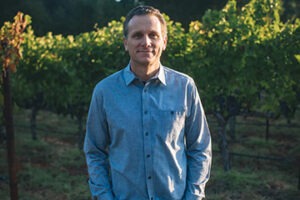
Trefethen CEO Jon Ruel.
JON RUEL: “My background is in ecology, and my approach to our vineyard and our winery is as an ecosystem. That includes everything in that ecosystem—plants, insects, grapevines, the wine we make… But also the humans and the money. If it’s so expensive that we can’t afford to do it, then it’s not sustainable. My favourite examples are of where it all comes together—things that help us save money, reduce our impact on the environment and increase the quality of our grapes. We had a block of Merlot that was underperforming because it was too vigorous. The vines were growing too much, and we had to spend a lot of time and energy trimming them back.
“We asked, ‘How do we get this vineyard back into balance?’ So we spent some money buying an expensive cover crop seed—a kind of perennial grass. We sowed it once and it comes back every year and stays green until June. Long after the winter rains have stopped, this grass is still mining moisture out of the soil and stealing it from the grapevines. So it’s like an anti-crop, competing with grapevines. That has slowed down the vigour of the grapevines to the point where in just two years we reduced the farming cost of the vineyard, thereby reducing tractor emissions, while increasing the quality of the grapes because the vines are more in balance and are no longer shading the fruit with lush foliage. It has been a win-win-win situation.
“Another example is solar energy. It paid for itself in eight years, and now we’re making money by not paying for higher electricity costs. Also, we make our own fertilizer through a composting program and through the use of cover crops. In each case we are trying to improve the internal resiliency of the system, while decreasing inputs from the outside, which usually decreases costs as well. One thing we must do in terms of the intersection of finance and sustainability is to continue to focus on quality. We would not do things that are ‘green’ and save money if they were making the quality worse. It’s too critical to the integrity and sustainability of the Trefethen brand and Napa Valley.”
You have an advantage over many wineries from a staffing standpoint.
“We have the luxury and responsibility of our own on-site vineyards and team—150 employees across the entire company, half of whom are working in the vineyard every day. We’ve had three crews of 10 people picking grapes every day through harvest, six days a week, since August 15. And we’ve picked as many as 80 tons in one day. They are averaging over 30 clusters a minute. And we have a support team to keep the pickers picking.
“Some of my friends work for wineries where they buy grapes, and they call the grower, who tells them, ‘We can pick five tons for you sometime next week, but not everything right away.’ Whereas we can decide every day which grapes we need to bring in.
“So our winemaker Bryan Kays is walking the vineyards and tasting grapes, and is diligent about checking chemistry and picking early. He will start picking Riesling and Chardonnay when they are still very tart and acidic—when you wouldn’t want to drink it as is. Then we pick at a point a week later where we are getting more citrus fruit, and more stone fruit, and then a little later when there are more tropical fruits. Then we blend them together. And that’s why we have people who say, ‘I get mineral notes,’ and another says, ‘It’s tropical,’ and another says, ‘I get more lemon and lime.’ You put them all together and you get one amazing Riesling.”
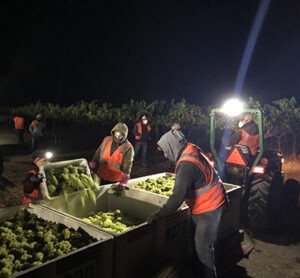
Trefethen vineyard pickers harvest Chardonnay grapes by light in the wee hours of the morning to ensure cool, fresh juice.jpg
You do a lot of picking at night to ensure that crispness too.
“Especially with white wines. Our classic start time is 2 a.m. Our employees like it, as they would rather be out in the vineyard when it’s 55°F then when it is 95°F. We have all sorts of lights and safety measures—it looks like a rock concert out in the vineyard. And the grapes come in fresher when we pick at night, keeping their aromatics. If we were to pick during the peak of the day, we’d have juice that’s 85° instead of 55°, and then we need to use energy to cool it down. So it’s better for both quality and sustainability.”
“If you rely on other growers to pick grapes, they might pick at night, but then leave the grapes on the truck for five hours, meaning you’ve lost the benefit of picking when it’s cool. At Trefethen, there is no distance from the vineyard to the winery. So when the cellar crew shows up at 6 a.m., the vineyard crew has been picking for four hours and have grapes that are still cold, and they can be taken right away. That kind of vertical integration is not common.”
That kind of flexibility must also be advantageous at a time when weather events are more extreme and sporadic and you need to pick something right away.
“Farming is risky business. Every year we are at the mercy of Mother Nature. This year was no exception. We have the ability to manoeuvre quickly if a weather event is on the horizon. This year we had a heat spell over Labor Day that got to 116° in the vineyard. We figured, ‘We better pick all the Pinot Noir before that happens, so let’s go!’”
You have a good reputation for employee HR.
“The humans are a vital part of our vineyard and winery ecosystem. We can’t do this without our employees. This is not migrant farm labour that comes and goes when your lettuce is ready to be picked, and then we lay them off two weeks later. These are long-term, year-round positions earning well above a living wage, with a full benefits packages, because that’s how we get the quality that we are after. The average tenure in our company is eight years. I sat down recently with one of our employees, Moises, who has been with us for over 40 years working the same vineyard every day. Why? Because we have a fantastic culture and we treat our staff well. And so the grapes taste great, the wines taste great, and it keeps perpetuating that way.
“The pandemic has made for a challenging time to find and keep employees. People ask me, ‘How do you do it?’ And I’m like, ‘You should’ve started years ago. It comes from developing a culture where you value humans—the ones in your company and the ones that are your customers. Success follows from that.”
Your winery style definitely avoids that California stereotype of over-oaking.
“In my opinion, a lot of chardonnay coming out of California has too much oak and is missing the flavour of the grape. We have only 4% malolactic fermentation in the 2020 vintage. And like Riesling, our Chardonnay harvest lasts a few weeks so that we get different levels of acidity and grape ripeness.”
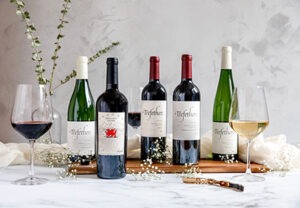 People think Napa Valley wines are too expensive. For an established winery on the Niagara bench, you’re probably looking at around $75,000 Cdn. an acre. But it’s somewhat more in Napa, isn’t it?
People think Napa Valley wines are too expensive. For an established winery on the Niagara bench, you’re probably looking at around $75,000 Cdn. an acre. But it’s somewhat more in Napa, isn’t it?
“In Oakville, in mid-Napa Valley, the average vineyard is going for at least $500,000 US an acre. That’s a lot of money. And it’s because real estate is precious there. Napa is a big name but also actually a pretty small place. It makes less than 4% of all California wine.
“Other aspects on the financial side be as simple as yields. I’ve been to vineyards in the Central Valley of California where they are farming to make $10 wines. They have very little money to pay their workers, very little money to farm and need to get the most crop per acre. Where they might be doing 10 tons of Cabernet per acre, we are doing three tons. So shouldn’t our bottle cost be at least three times higher than them?
“And as we move from the valley floor to the hillside of Napa, it’s a similar story, because it is harder and more expensive to farm up there, and the yields drop by half. So if I was getting three tons per acre, but now I’m getting 1.5 tons, shouldn’t those bottles cost twice as much?
“So there really are economics behind those prices. All that money goes somewhere. We have farmworkers with retirement plans, we have ambitious sustainability plans, and it all goes into wine that doesn’t just taste great, but feels great the more you know what goes into it.”
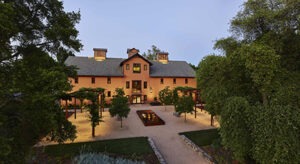
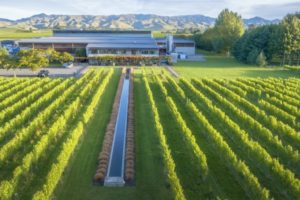
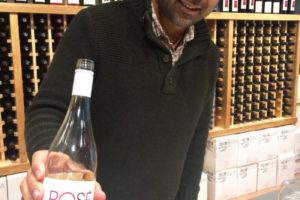

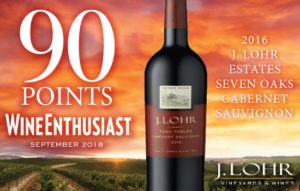
Leave a Reply
Your email is safe with us.